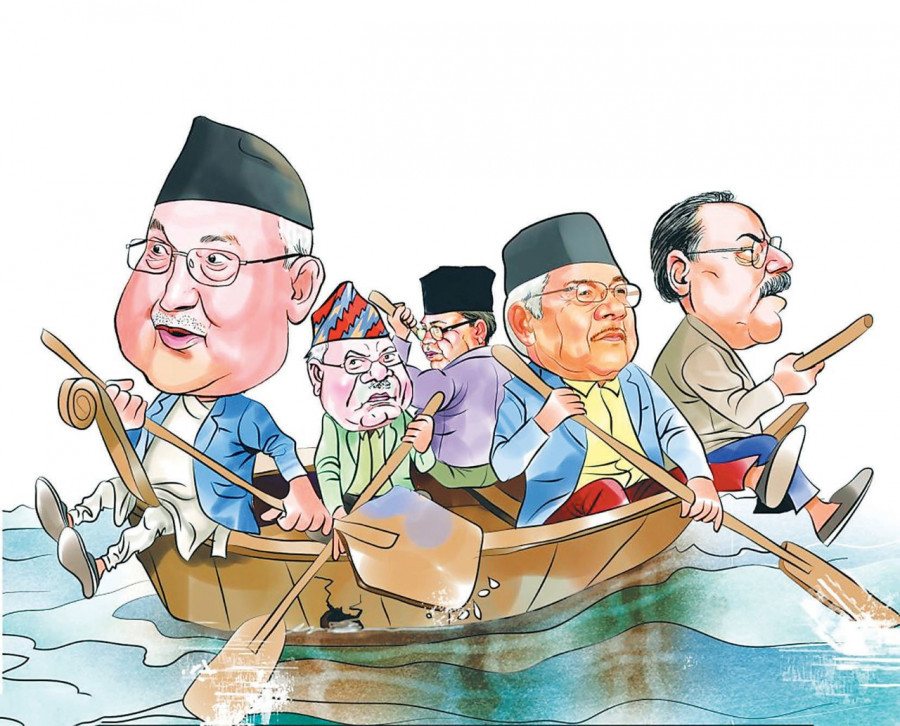How Cabinet-level immunity in Nepal’s anti-corruption law enables high-level abuse—and why a long-stalled amendment could be a turning point.
In his 1784 essay What is Enlightenment, Immanuel Kant argued that intellectual and political immaturity was a self-imposed condition, arising from a lack of courage to use one’s own understanding and to step out of dependency on others.
In Nepal, where institutional power is mostly exercised by legal exceptions and elite bargains, policymaking has become reflective of an 18th century adage. People and both provincial and federal parliaments seem to have normalized policy corruption for lacking courage and restricting themselves in serving their political masters at the top. Rendering cabinet decisions immune at birth, Nepal’s political elite have literally locked citizens out of a meaningful public participation, turning them again into subjects instead of makers and shapers of public policy.
At this critical moment, Nepal is presented with a rare opportunity. A chance to amend the long overdue Commission for the Investigation of Abuse of Authority (CIAA) Act, which is once again under discussion in Parliament. But far from correcting the root cause of corruption, the amendment proposal not only ignored the existing ‘Cabinet immunity ’provision, but also extended it to provinces.
First drafted six years ago, the amendment was revised and passed by the National Assembly (NA) two years ago. Article 4(1) of the CIAA Act of 1991 explicitly exempts the Cabinet’s “policy decisions” from investigation by the CIAA. The ambiguity of what constitutes a “policy decision” has opened the door to systemic abuse. Unlike petty corruption which includes bribery, procurement fraud, or bureaucratic extortion, policy corruption operates within the formal mechanisms of governance. It can be argued as lawful.
To its credit, the National Assembly had recommended narrowing this loophole. It proposed that “certain” categories of Cabinet decisions,
particularly relating to public interest or public procurement, be brought under the CIAA’s scrutiny. The recommendations were moved to the House of Representatives where a sub-committee, Committee on State Affairs and Good Governance reviewed it. While the amendment primarily updates the CIAA’s mandate under the federal restructuring, it also points to a long-standing legal blind spot, the immunity granted to “policy decisions” made at the Cabinet level. It has recommended that ‘certain ’types of decisions should come under CIAA’s jurisdiction such as public procurement (there are some exceptions) and decisions that are under the jurisdiction of other public officials such as a bureaucrat under the law. Additionally, it has recommended that if the decision directly benefits particular individuals, or private or business interests (condition applies), they should be investigated.
Originally intended to preserve policy making autonomy, the original amendment proposal instead sought a status quo of elite impunity. The impact is evident in several major cases that has affected a generation. In the infamous scandals such as the Lalita Niwas-land-grab and the procurement of wide-body aircraft, only bureaucrats and middlemen faced charges, while cabinet members who authorized the decisions remain untouched to this date. Some prime ministers were excused by the same anti-graft body (despite the supreme court order to the contrary) that was supposed to take the corrupt to justice (see the article below link**).
The same pattern can be seen in infrastructure projects such as the international airports in Pokhara and Bhairawa, which proceeded through Cabinet decisions despite misalignment with national priorities and feasibility assessments. Similarly, the disbursement of guerrilla allowances to former Maoist combatants, meant to support transitional justice, was riddled with irregularities. The leasing of prime Nepal Trust properties to private actors at below-market rates is another case in point. In each of these examples, Cabinet decisions provided a legal shield for actions that would otherwise be deemed prosecutable offenses.
Insiders report that the parliamentary subcommittee has already submitted its final recommendations. However, the bill now rests with the committee chair and is unlikely to move forward anytime soon. Observers suggest that this is no coincidence. Top leaders of the ruling coalition view an expanded CIAA jurisdiction as a political threat, and have reportedly intervened to stall progress. This reflects a larger culture within Nepal’s
legislative bodies, where delays, procedural opacity, and outright dismissal of public interest are now normalized.
In the meantime, Nepal’s institutional credibility continues to erode. Transparency International’s corruption indices remain poor, especially in areas such as procurement and infrastructure. Journalists and watchdog groups consistently trace irregularities to Cabinet decisions that channel benefits specific political and business interests. As former Supreme Court Justice Ishwor Khatiwada has observed, shielding Cabinet decisions from scrutiny creates a systemic blind spot, one that undermines the entire architecture of public accountability.
Nepal now stands at a pivotal juncture. The pending amendment to the CIAA Act presents not just a legislative opportunity, but a constitutional and moral reckoning. With Nepal currently on the Financial Action Task Force (FATF) grey list for concerns related to corruption and financial transparency, international credibility is also on the line.
But beyond reputational damage lies a deeper challenge. Will Nepal remain a polity in which public interest is subordinated to private consensus among elites? Or will it become a nation where citizens are empowered to understand, question, and shape the policies that govern them?
More than being legal questions, these issues are a test of political character and democratic will. The choice now lies with those in Parliament. But its consequences will be borne by every Nepali citizen.
This article was first published in Nepal New. You can read it here.




